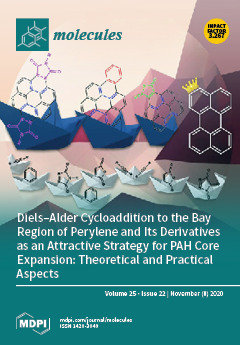Halophytes are the category of plants growing under harsh conditions of super-salinity, and are wide-spread in the coastal Mediterranean climatic conditions and desert oasis. They are adept at surviving through maintaining excessive production of enzymatic, and non-enzymatic secondary metabolites, especially phenolics and flavonoids that primarily work as anti-oxidants and phytoalexins. Five major halophyte species growing in the kingdom’s Qassim’s high-salted desert regions were investigated for confirming their traditionally used biological activity of sugar-control and anti-infectious properties. In this context, the comparative presence of phenolics, and flavonoids together with anti-microbial, anti-oxidants, and the anti-diabetic potentials of the plants’ extracts were investigated through the α-amylase inhibition method. The highest concentrations of phenolics and flavonoids were detected in
Salsola imbricata (360 mg/g of the extract as Gallic-Acid-Equivalents/GAE, and 70.5 mg/g of the extract as Rutin-Equivalents/RE). In contrast, the lowest concentrations of phenolics and flavonoids were detected in
Salsola cyclophylla (126.6 mg/g GAE, and 20.5 mg/g RE). The halophytes were found rich in trace elements, a factor for water-retention in high-salinity plants, wherein iron and zinc elements were found comparatively in higher concentrations in
Aeluropus lagopoides (4113 µg/kg, and 40.1 µg/kg, respectively), while the copper was detected in higher concentration (11.1 µg/kg) in
S. imbricata, analyzed through Inductively Coupled Plasma Optical Emission Spectrometric (ICP-OES) analysis. The anti-oxidant potentials and α-amylase enzyme inhibition-based anti-diabetic activity of
S. imbricata was significantly higher than the other halophytes under study, wherein
S. cyclophylla exhibited the lowest level of α-amylase inhibition. The maximum DPPH radicals’ (52.47 mg/mL), and α-amylase inhibitions (IC
50 22.98 µg/mL) were detected in
A.lagopoides. The anti-microbial activity against the Methicillin-Resistant
Staphylococcus aureus was strongly exhibited by
Zygophyllum simplex (33 mm Inhibition Zone-Diameter, 50 µg/mL Minimum-Inhibitory-Concentration), while
Escherichia coli,
Enterococcus faecalis, and
Candida albicans growths were moderately inhibited by
Tamarix aphylla. The current findings exhibited significant differences among the locally distributed halophytic plants species with regards to their bioactivity levels, anti-oxidant potentials, and the presence of trace elements. The ongoing data corroborated the plants’ traditional uses in infections and diabetic conditions. The enhanced local distribution of the plants’ diaspora and higher density of occurrence of these plants species in this region, in comparison to their normal climatic condition’s counterparts, seemed to be affected by humans’ use of the species as part of the traditional and alternative medicine over a period of long time.
Full article


